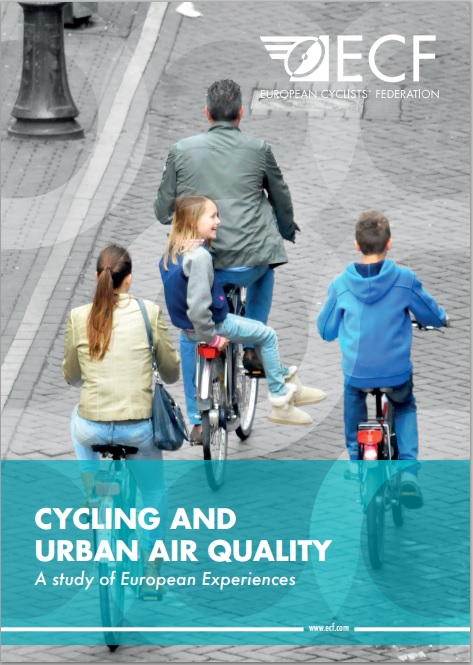Air pollution
Air pollution has a severe impact on our health and our environment in different ways. Most alarming are its direct effects on human health. Every year millions of people die prematurely or get sick because of bad air quality, resulting in reduced quality of life and huge economic losses.
Road transport is indeed a major source of air pollution as it accounts for 40% of NOx emissions in urban areas. The Euro standards system of vehicle emissions limits, intended to tackle urban air pollution, is not delivering the expected results on the streets: real-world NOx emissions from diesel cars are three to five times higher than official test results.
ECF report on cycling and air quality

Published in January 2015, this report made by Ricardo AEA aims to measure the eventual benefits on air quality of an increase of cycling use in the city.
ECF’s main conclusion from this study is that the bolder the measures taken by the authorities, the better the results for air quality. City authorities who want to protect their citizens from health risks due to bad air quality, have to act thoroughly.
The health benefits for citizens kick off immediately. Even with the smallest improvement in air quality, the potential years of life lost due to premature death and years of healthy life lost due to poor health or disability decrease. In addition, climate change, noise, access to mobility and economic benefits should be taken into account when authorities discuss cycling investments from the point of view of air pollution.
Technical measures such as Euro standard emission norms for vehicles, which have been in place for over 20 years didn’t succeed in decreasing the air pollution from the transport sector sufficiently. Many Member States & cities are still not complying with EU limit values. Vehicles are still polluting more than expected, motorized traffic has increased and there is a higher share of diesel cars. The scenarios proposed in the study measure the impact of non-technical measures, such as increasing cycling and car-free-zones, to improve air quality. They are realistic and achievable by many cities in a short time. The stronger these measures are, the better the results for air quality.
For ECF the city of Seville is an example of what can be done. Seville’s cycling mode share increased from 0.5% to 7% in a few years, thanks to serious investments in cycling and substantial measures to reduce motorised traffic, which allowed the city to comply with the EU Limit Values for air pollution. This example and similar actions taken by cities like Milan, Paris, Basel, Munich, Hamburg, Helsinki and Ghent show the lead for other European cities.




